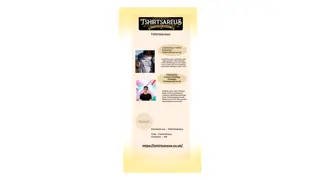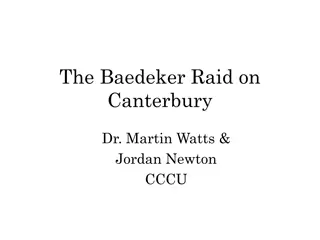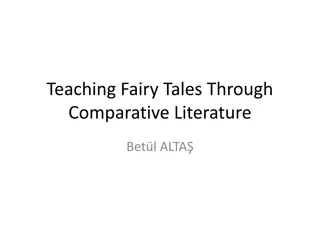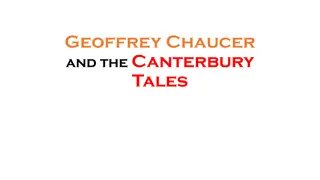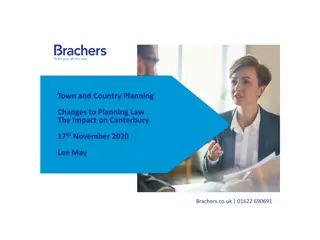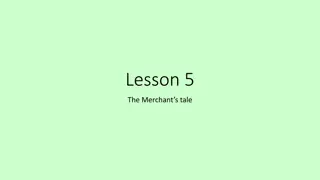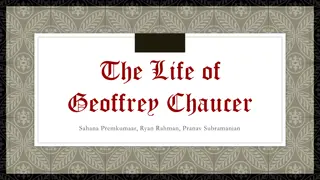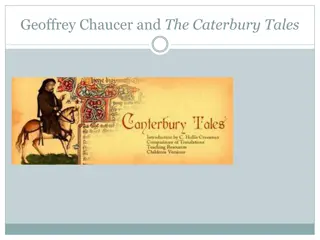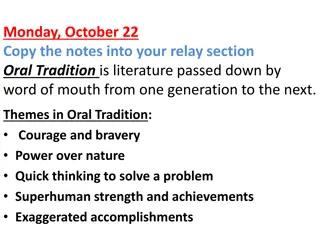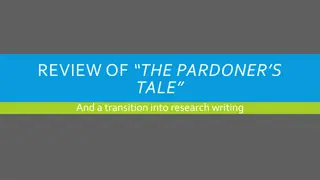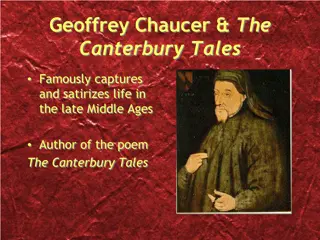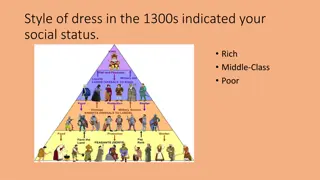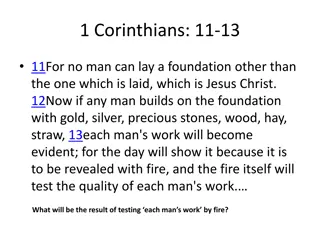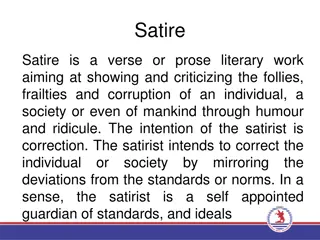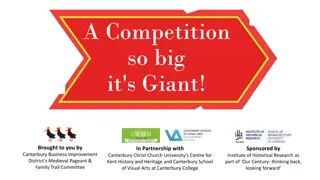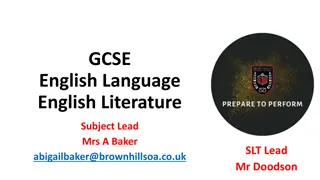Insights into Middle English Literature: Geoffrey Chaucer and Canterbury Tales
Explore the richness of Middle English Literature, focusing on the prominent works of Geoffrey Chaucer, particularly the masterpiece, Canterbury Tales. Dive into Chaucer's skillful use of rhyme, the vivid portrayal of ordinary characters in their storytelling journey, and the intriguing tales that bring to life the essence of the Middle English period. Discover the engaging complexities of Chaucer's work and the influence of other literary figures like William Langland.
Download Presentation

Please find below an Image/Link to download the presentation.
The content on the website is provided AS IS for your information and personal use only. It may not be sold, licensed, or shared on other websites without obtaining consent from the author. Download presentation by click this link. If you encounter any issues during the download, it is possible that the publisher has removed the file from their server.
E N D
Presentation Transcript
Middle English Literature Lecturer, Bet l ALTA
Middle English was used from about 1100 to about 1500. Geoffrey Chaucer was the greatest poet of that time. It is easy to read Chaucer than to read any literary texts in Old English Literature. Canterbury Tales is the greatest literary work of Geoffrey Chaucer.
Canterbury Tales Rhyme is used in place of alliteration in Old English Literature. It is illustrated as follows: Counterbury Tales Whan that Aprille with his shoures swote The droghte of Marche hath perced to the rote Geoffrey Chaucer, 1387. *tale *pilgrim
Canterbury Tales Counterbury Tales are about 17000 lines. A group of pilgrims tell their stories to pass time on their journey, from London to Counterbury.
Canterbury Tales Most of these stories are formed in verse. Most of the pilgrims are ordinary people in the real life. One of the well-known characters is the Wife of Bath. She belives in marriage and she has five husbands, one after the other.
Canterbury Tales In her stories, one of King Arthur s knights has to answer the question about what women love most, to save his life. An ugly old witch knows the answer which is to rule . She agrees to tell him the answer providing that the knight marries her. *knight, a man who is regarded as a good fighter in war is called sir. * witch
Chaucers Poems Troylus and Cryseyde (1372-7?): about the love of two young people. Shakespeare also wrote a play on the same subject, and this play is called Cressida . The Legend of Good Women *legend, story from ancient times
Middle English Literature In the Middle English Period, alliteration was still used, but not by Geoffrey Chaucer. William Langland used alliteration in his poem, The Vision of Piers the Ploughman. The poem is about the sorrows of the poor people. *vision
Although William Langland and Chaucer lived at the same time, Langland s characters are not as real as Chaucer s. Alliterative metre was used in Sir Gawain and Green Knight (1360-?). It is about the adventures of one of King Arthur s knights, called Sir Gawain who fights against an enemy with magic power. Sir Gawain finishes the adventure with all honour. *metre
The author of Gawain might have written Pearl and Patience (two of the best alliterative poems). The poet s daughter, Pearl dies at the age of two and he sees her in heaven in a dream and he feels comforted. Patience is the story of Jonah. Jonah, who was thrown into sea and swallowed by the whale or shark, was carried to the place of God where God wanted to see Jonah.
Middle English Prose The Ancren Riwle is based on teaching proper rules of life for religious women who are called anchoresses. It is religious and the focus of prose is on: What women may do How they ought to dress When they ought not to speak
Middle English Prose Richard Rolle wrote The Form of Perfect Living to give religious messages. An important character in this period John Wycliffe, a priest, attacked many of the religious ideas and practices of his time. He wanted everybody to read and understand Bible , but unfortunately it was in Latin. he translated the whole Bible into English.
Middle English Prose Sir Thomas Malory wrote Arthur s Death. He wrote tales of King Arthur and his knights. William Caxton printed the book in 1485 after Malory s death. He joined these stories into one long story. * William Caxton,(1422-91) set up the first printing press in 1476-7, printed books from other countries, and translated them into English prose.
The stories of Arthur and his knights have captured the attention of many British. Arthur is a shadowy figure of the past, but he might have lived. The stories of Arthur is about : * the cup used by Christ at the Last Supper. *his battle against his enemies, including the Romans.
The first English plays were about religious stories. Those plays were performed either in the church or near the church. Those stories were acceptable subjects for drama. Those early plays were defined as Miracles or Mystery Plays. * drama, stage plays * miracle, an event produced by more than human power * comedy, a comedy is a play which aims to entertain rather than to teach.
The Subjects of Miracle Plays Disobedience of Adam and Eve Noah and the great flood Abraham and Isaac Events in Christ s life
The most interesting thing is that English comedy was born in Miracle Plays though they were religious because: Both actors and audience had emotions and feelings as human beings. They were able to share their ideas about them. *Noah s ark
Morality Plays These plays aim to teach moral truths. Characters were virtues such as Truth or they were bad qualities such as Greed or Revenge. One of the well-known Moralities is Everyman. It was written in the fifteenth century.
The story is about the end of the life of a character, called Everyman . In the play, there are characters such as Beauty, Knowledge, Strength and Good Deeds.
Interlude The Interlude was common in the fifteenth and sixteenth century. Actors played it between the acts of long Moralities - probably in the middle of meals. They are often funny. They were performed in colleges or rich men s houses, but not in churches.
The Four Ps and The Play of the Weather are Interludes, written by John Heywood. The writers of the early plays are unknown until the beginning of the sixteenth century. Heywood wrote other Interludes in Shakespeare s time.


